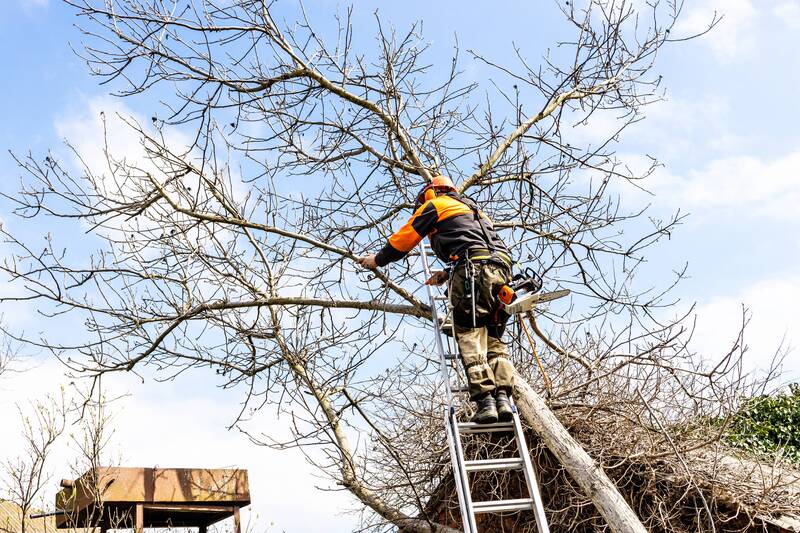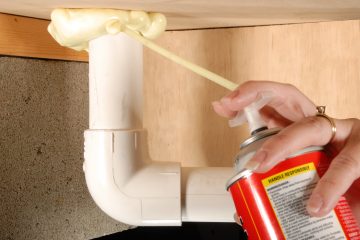When it comes to maintaining the health and aesthetics of your trees, you might have heard of the practice of tree topping. Tree topping is the process of removing the uppermost branches of a tree to reduce its height or overall size. While it may seem like a practical way to manage trees that have grown too large, especially near homes or power lines, it’s essential to understand the potential consequences and benefits.
In this article, we’ll explore whether tree topping is the right choice for your home, the advantages it offers, and alternative tree care services that may better suit your needs. If you’re searching for “tree service near me” or “local tree services” in Atlanta, this guide will help you make informed decisions for your property.
What Is Tree Topping?
Tree topping involves cutting the tree’s main branches down to stubs or lateral branches. This method is often used to control a tree’s height and prevent it from growing too close to power lines, buildings, or other structures. While topping can provide immediate results, it’s not always the best solution in the long term.
Pros of Tree Topping
1. Immediate Size Reduction
If a tree on your property has grown too tall and is posing a risk to nearby structures or power lines, topping can quickly reduce its size. This immediate action might feel like a solution, especially if you’re facing a potential hazard during storms or high winds.
2. Quick Emergency Solution
In some cases, especially when dealing with emergency tree removal, topping might serve as a fast fix to eliminate the immediate threat. If a tree has been damaged in a storm or is at risk of falling, topping could be used temporarily while a more comprehensive plan is developed.
3. Cost-Effective for the Short Term
Tree topping is often less expensive than other tree pruning methods in the short term. If you’re looking for a quick and affordable solution, topping might seem appealing.
The Risks of Tree Topping
While topping may provide a fast fix, it’s important to understand the long-term risks associated with this method:
1. Weak Growth
When a tree is topped, it often responds by producing weak, fast-growing shoots called “water sprouts.” These sprouts are not as structurally sound as the tree’s original branches, making them more prone to breaking or falling in the future. In the long run, this could increase the need for further tree care services, such as regular pruning or emergency tree removal.
2. Tree Health Decline
Topping can severely weaken a tree’s health by removing a large portion of its canopy. The leaves are responsible for photosynthesis, which provides energy to the tree. By removing significant amounts of the tree’s leaf structure, its ability to produce food is compromised. This can result in stunted growth, disease, or even death over time.
3. Aesthetic Damage
Tree topping can also lead to unsightly results. Once topped, a tree often loses its natural shape, leaving it with an uneven and awkward appearance. This can diminish the curb appeal of your property, which is something to consider if you’re looking for “local tree services” to enhance your home’s exterior.
Alternatives to Tree Topping
Instead of topping, consider these tree care services that can provide more sustainable and long-term results:
1. Crown Reduction
Crown reduction involves carefully pruning the outer edges of the tree’s canopy to reduce its size while maintaining its natural shape. This method is less invasive than topping and helps the tree retain its structural integrity. It’s an excellent option if you want to manage a tree’s growth without compromising its health.
2. Crown Thinning
Crown thinning involves selectively removing certain branches to reduce the density of the tree’s canopy. This allows more light to penetrate through the tree and improves air circulation. It’s a safer and healthier option for the tree, reducing the risk of breakage and the need for emergency tree removal.
3. Regular Pruning and Maintenance
The best way to avoid the need for drastic tree services like topping is to schedule regular tree care services in Atlanta. Professional arborists can assess your trees and provide routine pruning to keep them healthy, properly shaped, and less likely to pose a risk to your home or property.
When to Call for Professional Tree Services
If you’re unsure whether tree topping, pruning, or another service is right for your property, it’s always best to consult with a professional tree service near you. Southern Star Tree Service offers expert guidance and tailored solutions for all your tree care needs, including emergency tree removal and routine maintenance. Their team of certified arborists can help you make informed decisions to protect both your trees and your home.
Conclusion
Tree topping might seem like an easy solution for managing overgrown trees, but it’s important to weigh the potential risks and benefits. In many cases, alternative methods such as crown reduction or thinning can provide better results for your tree’s health and appearance. If you need expert advice or immediate assistance, consider reaching out to a trusted local tree service for guidance.
For those in the Atlanta area, Southern Star Tree Service offers reliable and professional tree care services. Whether you’re in need of “emergency tree removal” or ongoing maintenance, their experienced team can provide the solutions you need to maintain the beauty and safety of your property. Don’t hesitate to contact Southern Star Tree Service for all your tree care needs!



